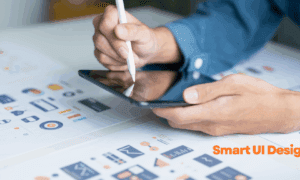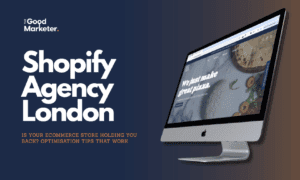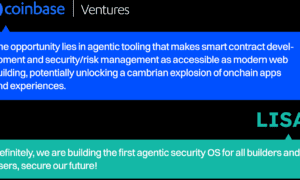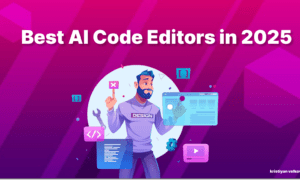I’ve watched too many brilliant startup ideas crash and burn because nobody thought about the user experience until it was too late.
Last month, I spoke with a founder who’d raised $2M for a productivity app. Great concept. Solid team. But users kept churning after the first week. The problem? Their interface felt like solving a Rubik’s cube blindfolded. Every simple task required five clicks and a tutorial video. What they really needed was professional UX design consulting to untangle their user journey mess.
Here’s the brutal truth: in today’s market, users won’t give you a second chance if your design sucks. They’ll bounce to a competitor faster than you can say “product-market fit.” At Intuitia, we’ve seen this pattern countless times with startups that underestimate the power of exceptional UI & UX design.
Why Bad UI & UX Design Kills Startup Success (The Hidden Cost)
Most founders think UI & UX design is about making things look professional. Wrong. It’s about removing every possible reason for users to quit.
When Airbnb’s founders were struggling in 2008, they didn’t need more features. They needed better photos and a booking flow that didn’t make people feel like they might get murdered. One design sprint changed everything and the same principles apply whether you’re building a marketplace or need SaaS website design expertise to convert visitors into paying customers.
Your startup design process isn’t separate from your business strategy. It IS your business strategy. Every confused user represents lost revenue. Every friction point in your interface is money walking out the door.
Consider this scenario: you spend $50 to acquire a user through ads. They sign up, get confused by your dashboard, and never return. You just paid fifty bucks for someone to hate your product. Scale that across hundreds of users, and you’re bleeding cash. This is where strategic UI design becomes not just important, but critical to your startup’s survival.
At Intuitia, we’ve seen this pattern repeat across countless startups. The companies that succeed are the ones that prioritize user experience from day one, not as an afterthought.
Startup User Research: Finding What Users Actually Want
Forget those elaborate user personas with stock photo faces and made-up hobbies. Real startup UX research starts with conversations.
I once worked with a fintech startup convinced their users wanted advanced analytics dashboards. After interviewing twenty actual customers, we discovered they just wanted to know if they could afford groceries this week. The analytics could wait.
Here’s how to do user research without burning months:
Talk to five people who’ve tried your product and quit. Ask them where they got stuck. Don’t defend your choices, just listen. Their feedback reveals more than any focus group.
Shadow customer support for a week. Every support ticket is a design failure screaming for attention. If users consistently ask “how do I…” about the same feature, your interface isn’t clear enough.
Watch people use your product in real time. Screen sharing tools cost twenty bucks a month. Use them. Watching someone struggle with your navigation for thirty seconds will teach you more than reading fifty survey responses.
Essential UX Design Principles for Resource-Limited Startups
The Two-Second Rule
Your users should understand what your product does within two seconds of landing on it. Not two minutes. Two seconds.
Dropbox nailed this. You see the homepage, and boom: you immediately know it stores files in the cloud. No explanation needed. No animated videos required.
Test this with your own product. Show your homepage to someone for exactly two seconds, then ask them what your company does. If they can’t explain it, you’ve got work to do.
Progressive Disclosure is Your Friend
Don’t dump every feature on users at once. It’s like serving a seven-course meal all at the same time: overwhelming and inedible.
Slack understood this perfectly. New users see a simple chat interface. Advanced features like workflows and bots reveal themselves gradually as users become comfortable. This approach reduces cognitive load and increases feature adoption.
Make the Next Step Obvious
At every point in your user journey, the next action should be crystal clear. Users shouldn’t have to think about what to do next. They should just know.
Spotify’s onboarding exemplifies this. Choose genres → pick artists → start listening. Each step flows naturally into the next. No confusion, no branching paths, no decision paralysis.
Smart UI Design Strategy: Building Great Experiences on Budget
Start with Mobile, Always
Desktop first design is like planning a party for twenty people, then trying to squeeze everyone into a phone booth. It doesn’t work.
Mobile first constraints force you to prioritize ruthlessly. When you’ve got limited screen space, every element must justify its existence. This discipline creates cleaner, more focused experiences across all devices.
Instagram Stories wouldn’t exist if they’d designed for desktop first. The format only makes sense in a mobile context, but it became one of their most engaging features.
Steal Shamelessly (But Intelligently)
Every startup founder should maintain a swipe file of great design patterns. Don’t copy blindly. Understand the psychology behind the choices.
Why does Uber show you the driver’s photo and license plate? Trust and safety. Why does Netflix auto-play videos? Engagement and content discovery. Learn the principles, then adapt them to your context.
Design Systems Save Your Sanity
You don’t need an enterprise level design system day one. Start with basics: define your colors, typography, button styles, and spacing rules. Document them somewhere everyone can access.
This prevents the design chaos that happens when different team members make ad-hoc decisions. Consistency builds user confidence and reduces development time. Standardizing your design system early means your product looks cohesive as you scale, rather than like it was designed by committee.
Common Startup Design Mistakes That Cost Users and Revenue
Feature Creep Kills Clarity
I’ve seen promising startups turn their simple, elegant products into Swiss Army knives nobody wants to use. More features don’t always mean more value.
WhatsApp succeeded by doing one thing exceptionally well: sending messages. They resisted adding photo filters, games, or shopping features until they’d perfected the core experience.
Ignoring the Emotional Journey
Users aren’t robots. They have feelings about your product: frustration, delight, confusion, satisfaction. Map out the emotional highs and lows in your user journey.
Where do users feel most confident? Where do they get anxious? Designing for emotions, not just tasks, creates experiences people remember and recommend.
Assuming Users Think Like You
You know your product inside and out. Your users don’t. What seems obvious to you might be completely baffling to them.
I once watched a startup founder get frustrated during user testing because testers “weren’t clicking the right buttons.” The buttons weren’t wrong. The users weren’t wrong. The interface wasn’t communicating effectively.
UX Metrics for Startups: Measuring Design Success That Matters
Track metrics that connect to revenue, not vanity numbers. Page views don’t pay the bills. Conversions do.
Focus on user flow completion rates. How many people who start your onboarding actually finish it? How many trial users convert to paid customers? These numbers tell you if your design is working.
But don’t ignore qualitative feedback. Set up simple feedback widgets. Read app store reviews. Join customer calls occasionally. Numbers show you what’s happening; conversations tell you why.
Building User-Centered Startup Products: Your Design Roadmap
Great UI & UX design isn’t about having the biggest budget or the fanciest tools. It’s about understanding your users deeply and removing every obstacle between them and success.
Your design decisions today determine whether you’re building a product people tolerate or one they can’t live without. Choose wisely.
The startups that survive and thrive don’t just solve problems. They make solving those problems feel effortless. That’s the real magic of exceptional design.
Whether you’re just starting out or scaling fast, remember that your interface is your product’s first impression, last impression, and everything in between. Invest in getting it right, and your users will reward you with loyalty, growth, and success.



































